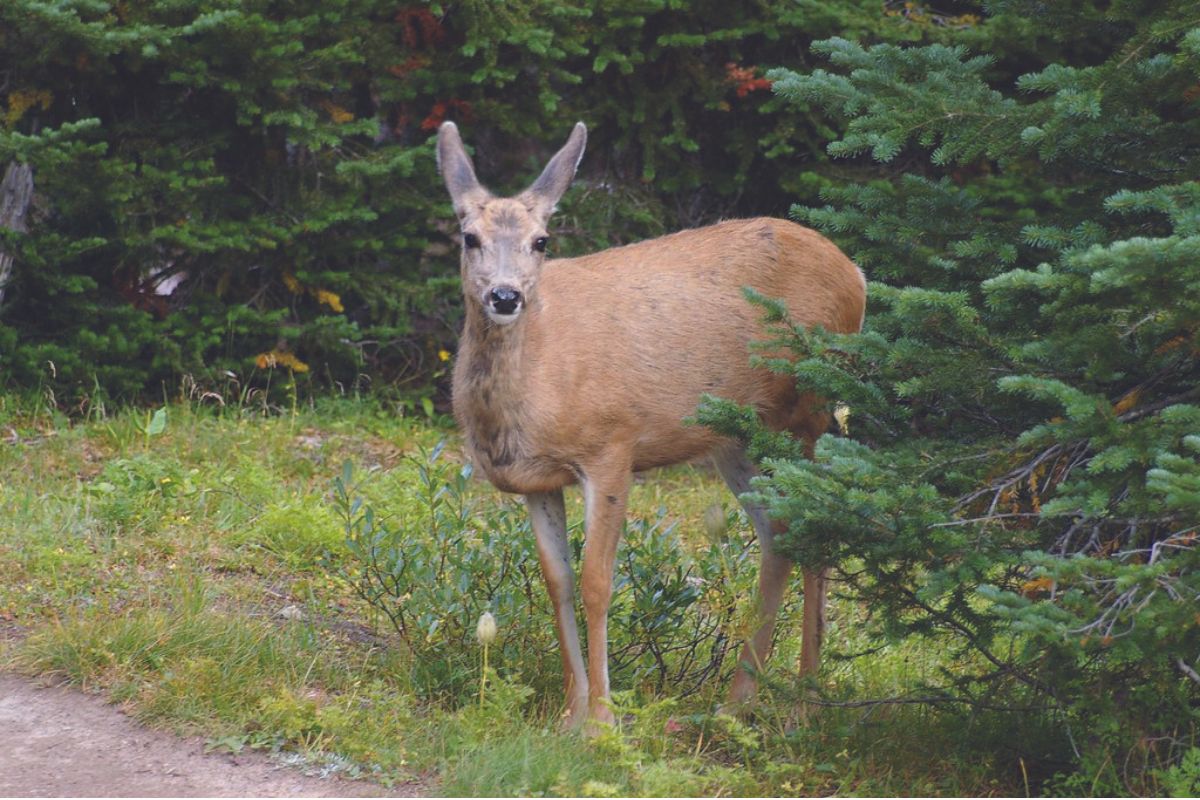Urban guide to animal etiquette
Lewis Kelly - 16 December 2022

University of Alberta biologist Colleen Cassidy St. Clair shares advice on how to appreciate wildlife from afar — helping to keep people and animals safe.
Climb a tree or turn and flee? With wildlife encounters becoming more common in cities, conservation biologist Colleen Cassady St. Clair, ’88 BSc(Spec) offers three tips to keep humans and animals safe.
DON’T FEED THEM
“Animals become ‘food conditioned,’ a term we use when they associate people with food and become very aggressive,” says St. Clair. “Food-conditioned carnivores are often destroyed to protect public safety.” She says that a surprising amount of food conditioning happens unintentionally through animals eating things like compost, bird seed, uncontained garbage and fallen fruit.
ENJOY FROM AFAR
“Don’t get too close,” says St. Clair. “If you’ve done it inadvertently, back up slowly. Don’t turn and run, as that will invite some animals to chase. Speak to the animal in a firm voice while backing away.” But looking at a wild animal is one of the most enjoyable things you can possibly do with your time, she says. “Psychologists have shown that a person watching an animal gets a huge dopamine hit just from seeing it in a natural setting.”
PUT IT ON THE ’GRAM (AND BEYOND)
“Digital tools like smartphones have created ways for people to record their wildlife observations,” says St. Clair. “The power of having so many people watching wildlife and sharing what they see is changing how we do research.” For instance, she and her students recently submitted for publication a paper based on 10,000 crowd-sourced observations of urban coyotes from citizens reporting the sightings to the Urban Coyote Project.